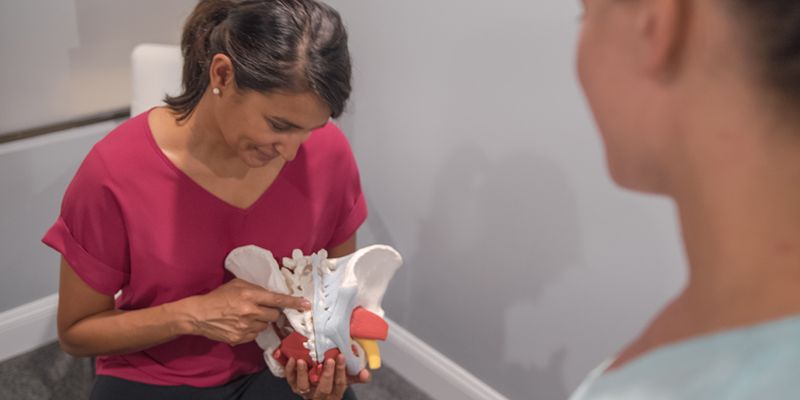
Our hips need to function like a well-oiled machine to keep us walking tall and without pain. Each hip is made up of a ball and socket joint that needs lubrication and the support of articular cartilage to move smoothly and without friction. Our hips are surrounded by fluid that helps the ball move within the socket. However, the hip joint is a potential space; there is only a limited amount of room for the ball of the joint, or the femur, to move within the socket, or the acetabulum. Because of this fact, pain in the pelvic bones, muscles and structures surrounding the hip joint may occur easily, sometimes as a result of injury but more often due to muscular imbalances causing increased stress on the joint.
Anterior hip pain, for example, manifests in the front of the pelvic area. It often goes hand in hand with groin pain, or could be the direct cause of it. This type of pain occurs because we rely heavily on our hips to bear our weight and to do everything from sitting to standing and walking to running. Anterior hip pain is typically associated to arthritis but often it is muscular imbalance. Osteoarthritis, a common form of wear and tear our joints experience as we age, is the most likely cause of chronic anterior hip pain in older patients because of the swelling it causes within the joint. Other causes may include tendinitis, in which tendons surrounding the joint enflame due to overuse and bursitis, in which fluid filled sacs called bursae that surround and cushion the joint become irritated from overuse. Hernias are also frequently to blame for groin pain associated with the hip. In some women, anterior hip pain may stem from gynecological conditions like endometriosis, in which uterine tissue grows in incorrect places, causing tenderness in the hip and pelvis.
Contrary to what many people struggling with chronic hip pain believe, hip surgery is not the only solution! Many of the above causes for hip pain can significantly improve with physical therapy. A skilled physical therapist can find and improve imbalances within the body to decease stress throughout the muscles, tendons and joints, hence decreasing pain and inflammation. A Rebalance therapist can get you on your way to recovery with a holistic and whole body approach. Your therapist will give you a hands-on evaluation including a gait assessment to determine if you are walking correctly. They may use techniques such as palpation (using the hands to find abnormalities within the hip joint) and range of motion measurements to gauge how effectively the joint is moving, functioning and maintaining its strength and flexibility. When it comes to pain relief, your therapist may use techniques such as trigger point release to relieve “knots” in the joint and manipulation or myofascial release to relieve pinched nerves or break down scarring that may be surrounding the joint. They will also teach you range of motion exercises appropriate for you so that you can relieve instead of increase your pain.
Is hip pain holding you back from good health? Contact Rebalance physical therapists to take a step in the right direction towards your recovery.
In-Person and Online Consultations


